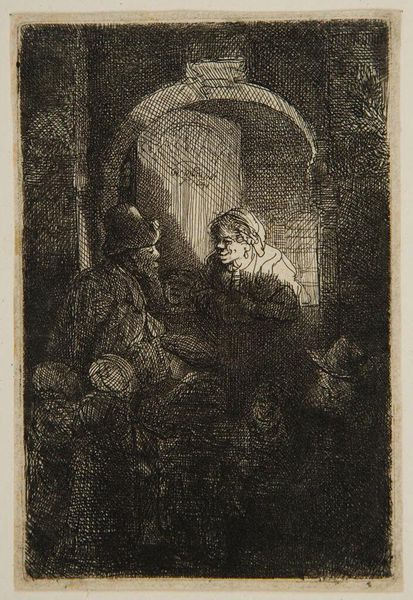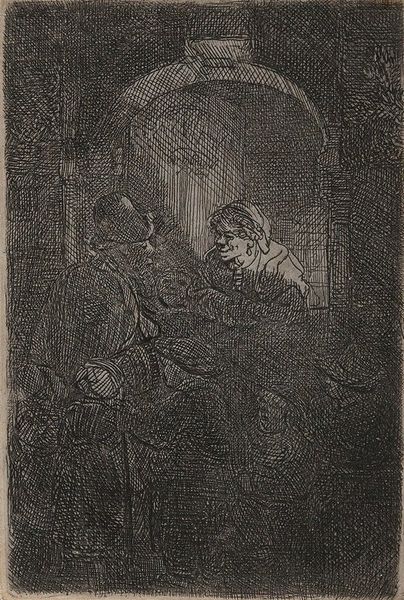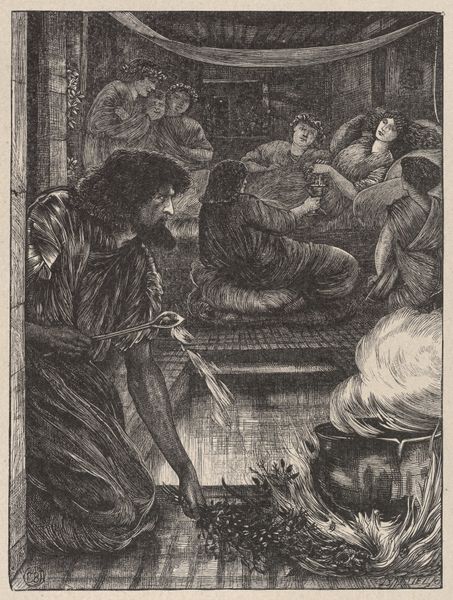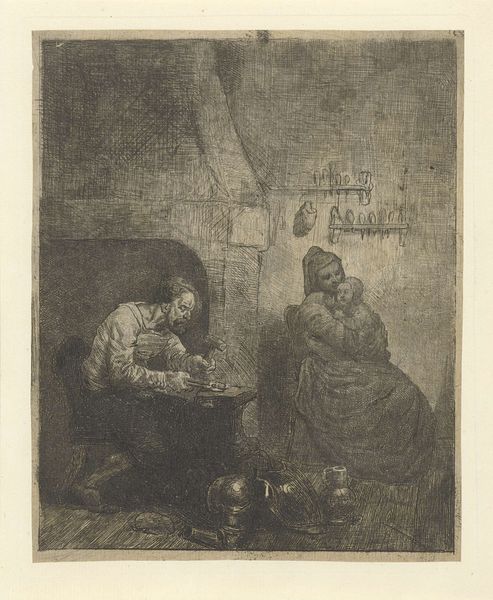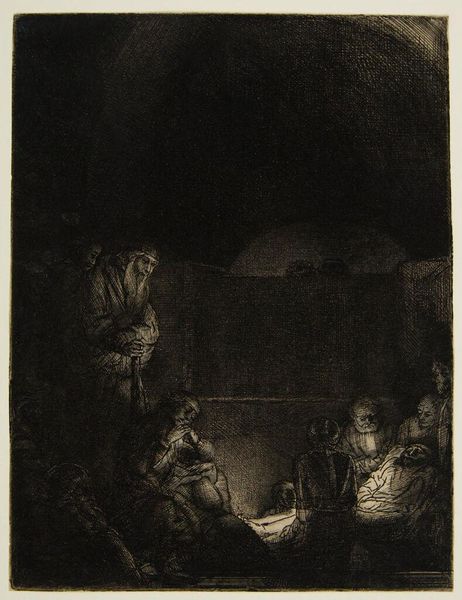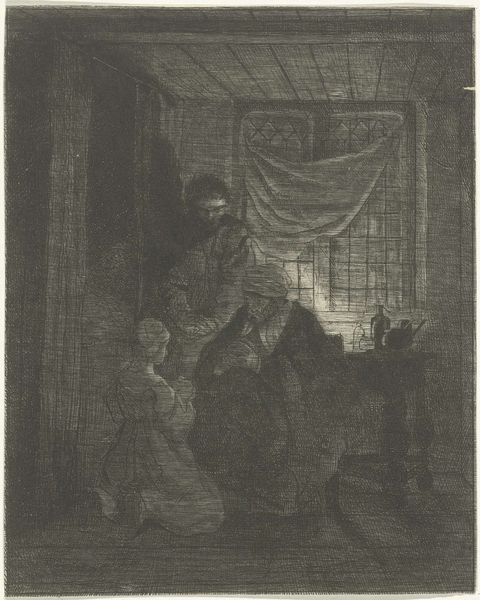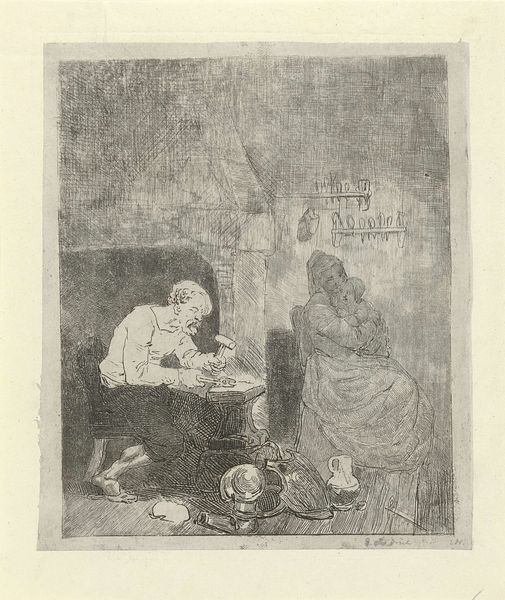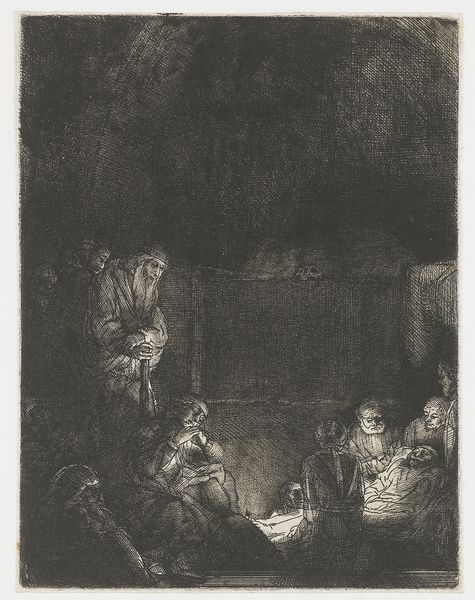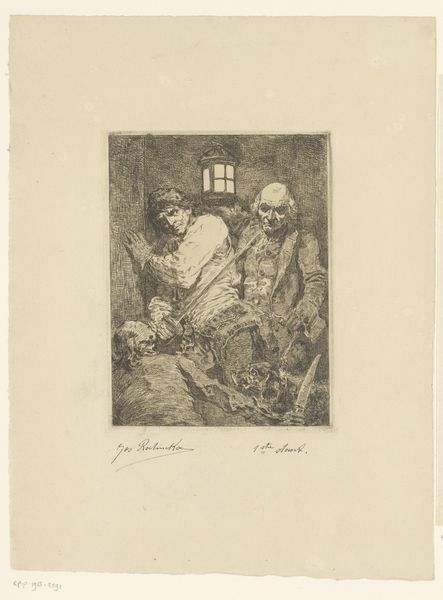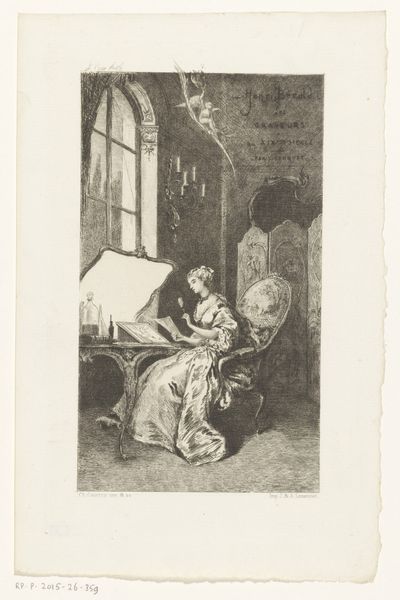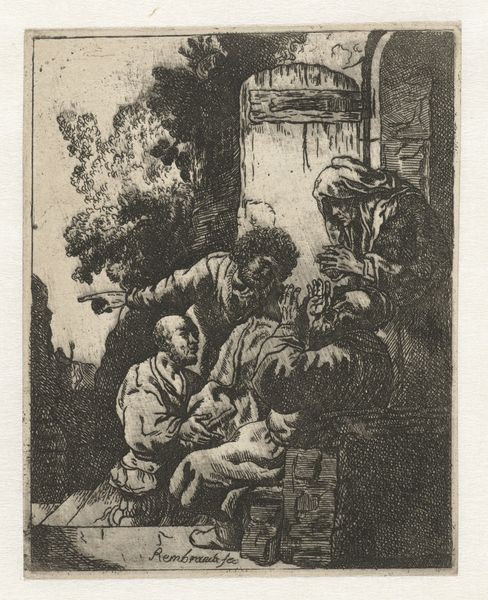
Woman at a door-hatch talking to a man and children (The "Scoolmaster") 1641
0:00
0:00
print, engraving
#
portrait
#
narrative-art
#
baroque
#
dutch-golden-age
# print
#
figuration
#
engraving
Dimensions: 93 mm (height) x 61 mm (width) (plademaal)
Editor: This is "Woman at a door-hatch talking to a man and children (The 'Scoolmaster')," an engraving by Rembrandt van Rijn from 1641. The texture and detail he achieves with just lines is pretty amazing, though it’s also quite a dark and cramped composition. What strikes you about this piece? Curator: The "Schoolmaster" is a potent commentary on the state of education and poverty in 17th-century Holland. While the title suggests a school setting, notice how Rembrandt places this interaction at a humble doorway, literally on the threshold of a home. Who benefits from, or perhaps controls, knowledge and access? Editor: That's a good point. The doorway seems to separate worlds. Curator: Exactly. And consider the figures. The woman appears engaged and even amused, while the man and children seem relegated to the outside. What power dynamics might Rembrandt be hinting at here through that framing? How is this piece intended for the public consumption of art buyers at the time? Editor: So you’re saying the setting challenges assumptions about what learning looks like, and the positioning of the figures might suggest the exclusivity of education for only a select few at the time. I’m wondering if access to learning for women plays a role? Curator: Precisely. Think about who controlled the narrative – predominantly wealthy men. Images, prints like this, served to solidify certain societal roles and expectations, but also sparked critical thoughts that Rembrandt himself subtly injected. Does he glorify social hierarchies or is there criticism? It's not simple. Editor: That is interesting. I didn't even think about that, I was so focused on the aesthetics of it all. Curator: Right, seeing how institutions influence what art is created and then how it's viewed is essential, it makes this work more vibrant than just simply subject and artistry.
Comments
No comments
Be the first to comment and join the conversation on the ultimate creative platform.

